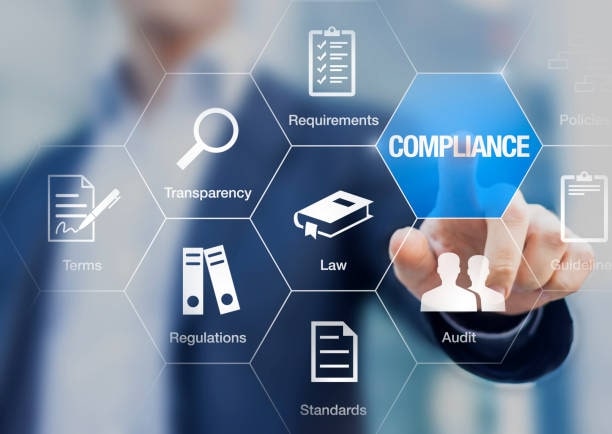Compliance Challenges

Overview
Compliance in the chemical industry is a multifaceted challenge involving adherence to environmental, safety and sustainability regulations. Small and Medium Chemical Manufacturing Industries often struggle to meet these requirements due to regulatory complexity, high compliance costs, technical limitations and evolving standards. Understanding these challenges in depth is crucial for businesses to develop effective compliance strategies, avoid penalties, and build a sustainable and responsible operational model. This section provides a comprehensive analysis of the most common compliance challenges faced by the chemical industry, along with detailed explanations, practical solutions and actionable insights.
📑 Regulatory Complexity and Frequent Changes:
Challenge Overview:
The chemical industry in India is governed by a web of complex regulations enforced by multiple authorities, including the Central Pollution Control Board (CPCB), State Pollution Control Boards (SPCBs), the Ministry of Environment, Forest and Climate Change (MoEFCC) and other statutory bodies. The frequent amendments and overlapping regulations make it challenging for Small and Medium Chemical Manufacturing Industries to stay compliant.
Key Issues:
- Environmental Protection Act, 1986
- Air (Prevention and Control of Pollution) Act, 1981
- Water (Prevention and Control of Pollution) Act, 1974
1. Multiplicity of Regulations:
- Regular updates to discharge limits, emission standards protocols without sufficient transition periods.
- Examples: Revised effluent discharge norms for specific chemicals like phenols and heavy metals.
2. Frequent Amendments and Updates:
- Variations in enforcement by different SPCBs lead to compliance uncertainty.
- Issue: Conflicting guidelines between central and state regulations.
3. Inconsistent Interpretation and Enforcement:
Solutions:
- Implement tools for automated tracking of regulatory updates and alerts.
- Example: Enhesa Compliance Intelligence for global regulatory tracking.
1. Regulatory Compliance Software:
- Establish an internal team dedicated to monitoring regulatory changes and ensuring compliance.
2. Compliance Task Force:
- Engage experts for periodic compliance audits and interpretation of complex regulations.
3. Consultation with Regulatory Experts:
💸 High Compliance Costs:
Challenge Overview:
Compliance often demands significant investments in pollution control equipment, monitoring systems, certifications and skilled manpower. For Small and Medium Chemical Manufacturing Industries, managing these costs alongside operational expenses is a major challenge.
Key Issues:
- Installation of Effluent Treatment Plants , Scrubbers, (CEMS) involves high capital and operational costs.
- Impact:Financial strain, especially for businesses with limited budgets.
1. Capital Intensive Pollution Control Technologies:
- Costs related to renewing permits, third-party audits, laboratory testing of emissions and effluents.
- Examples: Annual compliance audits under ISO 14001 for environmental management.
2. Recurring Compliance Costs:
- Penalties, production downtime and reputational damage due to non-compliance.
- Statistics: NC penalties under the Environmental Protection Act range from ₹1 lakh to ₹5 lakh per offense.
3. Indirect Costs of Non-Compliance:
Solutions:
- Leverage schemes like Zero Defect Zero Effect (ZED) and Technology Upgradation Fund Scheme (TUFS).
- Tip: Explore tax rebates under Section 35AC for investments in pollution control.
1. Government Incentives and Subsidies:
- Common Effluent Treatment Plants (CETPs): Collaborate with other industries to share costs.
- Impact: Reduces capital investment for individual units.
2. Shared Compliance Infrastructure:
- Secure funding through green bonds and environmental loans for compliance infrastructure.
3. Green Financing:
🛠 Technical Challenges in Compliance:
Challenge Overview:
Technical challenges primarily involve monitoring emissions and effluents, data management and a lack of skilled manpower. Small and Medium Chemical Manufacturing Industries often lack access to advanced technologies and expertise required for effective compliance management.
Key Issues:
- Lack of IoT-based sensors and SCADA systems for real-time monitoring of emissions and effluents.
- Issue:Delays in detecting non-compliance incidents.
1. Insufficient Monitoring and Data Collection Systems:
- Managing large volumes of compliance data, including emission logs, waste manifests, and audit reports.
- Challenge: Manual data entry increases the risk of errors and non-compliance.
2. Complex Data Management:
- Outdated ETPs and air pollution control devices fail to meet revised standards.
- Example: Inadequate removal efficiency for particulate matter (PM) and volatile organic compounds (VOCs).
3. Obsolescence of Pollution Control Equipment:
Solutions:
- Implement IoT-based CEMS for real-time data capture and alerts.
- Software: Use platforms like Sphera or Enviance for compliance data management.
1. Adoption of Digital Compliance Tools:
- Upgrade bag filters, scrubbers, and electrostatic precipitators (ESPs) to enhance efficiency.
- Tip: Apply for financial assistance under the Environmental Relief Fund.
2. Retrofitting Existing Equipment:
- Conduct workshops on compliance management and monitoring technologies for employees.
3. Training Programs:
🌱 Sustainability Compliance Challenges:
Challenge Overview:
Sustainability compliance involves adhering to regulations on carbon emissions, waste minimization, water management and sustainable sourcing. Increasingly, regulators and customers demand transparency and sustainability reporting.
Key Issues:
- Need for GHG inventories and carbon accounting as part of compliance.
- Example:Reporting under the Perform, Achieve and Trade (PAT) scheme for energy efficiency.
1. Carbon Footprint and Emission Reporting:
- Mandates for waste management and recycling, particularly for packaging and hazardous waste.
- Challenge: Establishing take-back and recycling systems.
2. Extended Producer Responsibility (EPR):
- Compliance with Zero Liquid Discharge (ZLD) norms and waste recycling requirements.
- Example: Recovery and reuse of effluent water.
3. Water and Waste Management Compliance:
Solutions:
- Implement tools like EcoVadis or SAP EHS for sustainability compliance tracking.
1. Sustainability Management Software:
- Purchase carbon credits or invest in renewable energy projects to offset emissions.
2. Carbon Credits and Offsets:
- Obtain certifications like ISO 50001 (Energy Management) and ISO 14001 (Environmental Management).
3. Green Certifications:
🚀 Conclusion:
Addressing these compliance challenges requires a comprehensive approach involving regulatory awareness, technology adoption, cost management and skilled manpower. By proactively managing compliance, Small and Medium Chemical Manufacturing Industries can enhance operational efficiency, avoid legal risks and build a sustainable and compliant business model.
